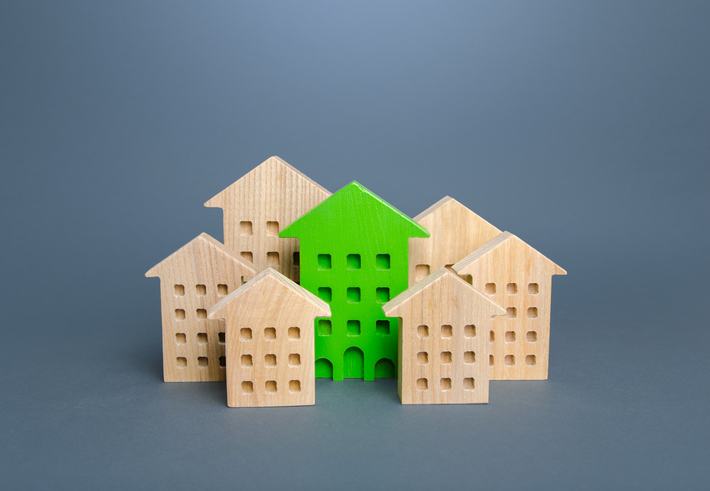Home » Uncategorised »
Property industry sees 10.8% increase in greenhouse gas emissions in the last decade
This article is an external press release originally published on the Landlord News website, which has now been migrated to the Just Landlords blog.

Virtual property viewings platform U-See Homes has researched just how much work the property industry has to do to lower its impact on the environment.
Greenhouse gas emissions are falling
The research involved an analysis of ONS data on greenhouse gas emissions across each industry over the last decade. Overall, it found that there has been a reduction of -16.9%.
The latest data shows that the property sector generated 980,000 tonnes of carbon dioxide in 2019. It is the fifth-lowest of all results and considerably lower than the 88,395,000 generated by the electricity, gas, steam and air conditioning supply unit sector.
However, the electricity, gas, steam and air conditioning supply unit sector has also seen the biggest reduction in greenhouse gas emissions in the last decade, down by a notable -47.4%. An additional 12 other sectors have also managed to reduce their impact on the environment in this time.
The property industry has some work to do
Unfortunately, seven sectors have seen an increase, the property industry being one of them.
Greenhouse gas emissions produced by the property industry have increased by 10.8% in the last 10 years, with just the accommodation and food services industry (11%), the construction industry (12.6%) and the activities of households as employers industry (14.7%) seeing a bigger increase.
What can the property industry do to change?
U-See Homes states that utilising technology is a good place to start. The platform’s previous research found that by replacing just the first initial viewing of a property with a guided virtual tour, estate agents could save 3,216 tons of C02 in a single year across the hundreds of thousands of property sales that take place.
Utilising a virtual platform could also bring greater benefit when it comes to the numerous property conferences and meetings held every year. Ezra, the digital coaching platform, recently found that holding just one conference of 1,000 people in a digital capacity could cut carbon emissions by nearly 95% – enough to power 17 homes for a whole year.
Remote working can also play a part. U-See Homes highlights that recent research by Vodafone shows the total carbon saving of an employee was just 272 kg before the pandemic, but due to remote working during the pandemic it increased to 889 kg.
Simon Dempsey, head of marketing for U-See Homes, comments: “Although the property sector may not be the worst offender in terms of its detrimental impact on the environment, it’s disappointing to see that there has been an increase in greenhouse gas emissions over the course of the last 10 years.
“In this day and age, there is a wealth of information and technology available to us that could, and would, allow us to reduce our carbon footprint and so there’s really no excuse for failing to address this issue head-on.
“As a result of COVID-19, we currently find ourselves at a fork in the road and there is a real opportunity to salvage something positive from the pandemic.
“A lengthy stint of remote working has proven that great people utilising great technology can keep the world turning and incorporating this permanently within the industry could make a real difference to the planet.
“Of course, some form of physical workplace and activity can never be replicated digitally but we would urge everyone within the sector to consider what sort of balance could work for them on an ongoing basis.”
Greenhouse gas emissions by industry – Mass of air emissions per annum in thousand tonnes of carbon dioxide equivalent
| Industry | 2009 | 2019 | Change (%) – 2009 to 2019 |
| Activities of households as employers | 41 | 47 | 14.7% |
| Construction | 12,279 | 13,827 | 12.6% |
| Accommodation and food services | 3,240 | 3,596 | 11.0% |
| Real estate activities | 885 | 980 | 10.8% |
| Administrative and support service activities | 3,109 | 3,364 | 8.2% |
| Human health and social work activities | 5,176 | 5,469 | 5.7% |
| Agriculture, forestry and fishing | 46,030 | 48,586 | 5.6% |
| Other service activities | 987 | 973 | -1.4% |
| Wholesale and retail trade; repair of motor vehicles and motorcycles | 16,623 | 16,056 | -3.4% |
| Transport and storage | 83,685 | 79,546 | -4.9% |
| Professional, scientific and technical activities | 1,981 | 1,861 | -6.1% |
| Financial and insurance activities | 278 | 260 | -6.3% |
| Manufacturing | 94,184 | 83,655 | -11.2% |
| Arts, entertainment and recreation | 1,195 | 1,050 | -12.2% |
| Information and communication | 980 | 844 | -13.8% |
| Education | 3,185 | 2,565 | -19.5% |
| Mining and quarrying | 27,056 | 21,786 | -19.5% |
| Water supply; sewerage, waste management and remediation activities | 36,408 | 26,211 | -28.0% |
| Public administration and defence; compulsory social security | 6,952 | 4,765 | -31.5% |
| Electricity, gas, steam and air conditioning supply | 168,060 | 88,395 | -47.4% |
| Total greenhouse gas emissions | 663,614 | 551,523 | -16.9% |
Data sourced from the Office for National Statistics – Atmospheric emissions




